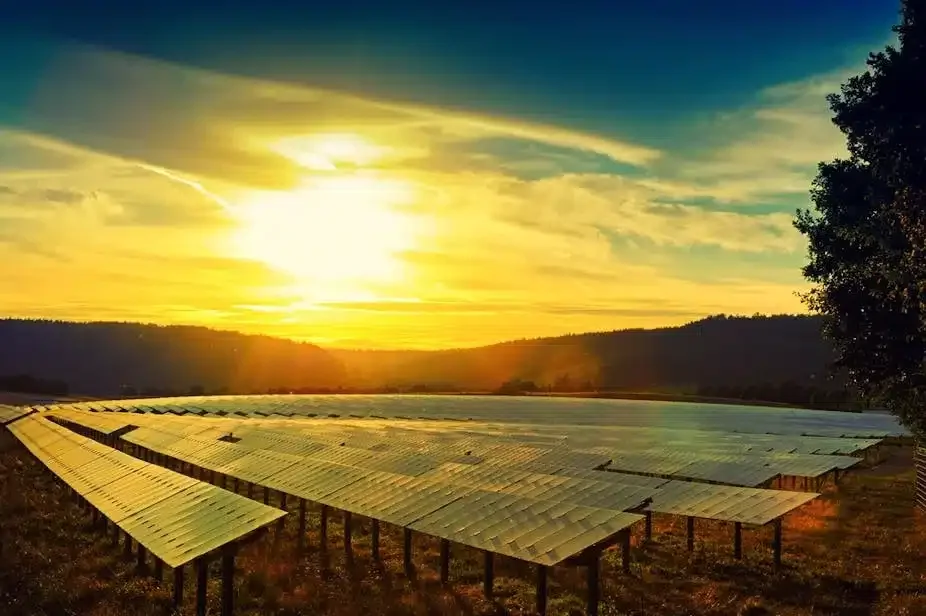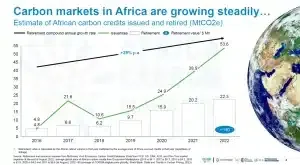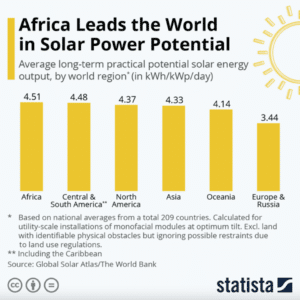The value of the global carbon credit market is growing exponentially and has reached a record-breaking high of $909 billion in the last year. Africa a continent with vast green energy reserves, is looking ahead to amplify their share in worldwide carbon trading to fund their development projects.
Nonetheless, Africa is facing several challenges to combat climate change and adapt to green energy transition. The global participants in the United Nations Framework Convention on Climate Change (UNFCCC) have pledged to support developing nations like Africa by providing financial aid, infrastructure support, and technological assistance to enhance climate actions.
The graph shows the projected growth of the African carbon market.
Source: The Rockefeller Foundation
The African continent aims to maximize its carbon credit economy with the of launch the African Carbon Markets Initiative (ACMI). The key objectives are:
- boost carbon credit potential,
- increase access to clean energy
- promote sustainable development
- create job opportunities in the country
ACMI has etched a roadmap to dramatically expand Africa’s participation in the voluntary carbon credit market. Each initiative defined above has a budget outline, carbon credit value, and revenue target.
- Read more: Unleashing Africa’s Climate Finance with Billions of Carbon Credit Potential (carboncredits.com)
ACMI’s Bold Action Plan for Africa’s Carbon Market
The existing funding for Africa’s energy transition falls significantly short of the necessary amount. Thus, ACMI’s goals are essential to transform the financing landscape of the continent.
ACMI’s prime target is to generate 300 million carbon credits and unlock 6 billion annual revenues by 2030. By 2050, ACMI is targeting over 1.5 billion annual credits, leveraging over $120 billion and supporting over 110 million jobs.
ACMI has collaborated with the Integrity Council for the Voluntary Carbon Market (IC-VCM) and the Voluntary Carbon Markets Integrity Initiative (VCMI) and is exploring the local carbon markets to produce high-integrity carbon credits. Not only this, it’s actively working with some of the leading carbon credit buyers like Standard Chartered, Nando’s, and Exchange Trading Group.
The ACMI also believes that the voluntary carbon market can succeed with people’s trust in carbon credit policies and its purpose to bring a positive impact on the environment and livelihood of Africans.
Several African nations, including Kenya, Malawi, Gabon, Nigeria, and Togo, have volunteered to partner with ACMI to expand carbon credit generation. According to a market survey, these 7 countries collectively have the potential to produce < 300 million metric tons of CO2 equivalents.
To support this move, H.E Yemi Osinbajo, Vice President of Nigeria and ACMI said,
“Carbon markets can deliver tremendous benefits for Nigeria and Africa—creating jobs, driving green investment, and reducing emissions. Nigeria is putting the groundwork in place today so that in subsequent years, carbon credits become a major industry that will benefit our people.”
Africa’s Path to Prosperity: Harnessing the Green Opportunities
As discussed before, improving global collaboration on climate change, increasing Africa’s resilience to climate shocks, and employing locals are the pathways to Africa’s prosperity. Its vast renewable energy resources, both solar and wind, and the carbon sinks form the backbone of its economy.
The ACMI focuses on climate projects needed for Africa’s green energy transition. Some of them are reforestation, forest conservation, renewable energy investments, carbon-storing agricultural practices, and direct air capture. Investors receive carbon credits as offsets for their ongoing emissions by funding climate initiatives.
The International Renewable Energy Agency (IRENA) has estimated Africa’s solar photovoltaic (PV) technical potential is at 7,900 GW.
This makes the continent one of the world’s highest generators of solar power. Noteworthy, North Africa receives more than 2,000 hours of sunshine per year.
From reports, we found out that U.S.-based Husk Power has raised $103 million to build at least 1,400 mini-solar grids in rural Africa and Asia. The firm has captured the solar market in Nigeria, hitting the petrol and diesel industry hard.
This move clearly shows that fostering renewable energy in Africa could diminish dependence on fossil fuels and cut CO2 emissions. It could open avenues for economic growth, job opportunities, and poverty alleviation.
Here’s an interesting graph depicting Africa’s dominance in solar power over the rest of the world.
Source: Global Solar Atlas/ The World Bank
It is expected that by 2030, Africa could cut over 2 billion tonnes of carbon dioxide equivalent annually by reducing deforestation, preventing forest degradation, and expanding sustainable forest management. These efforts could further scale up tradable carbon credits.
The continent’s expansive forests- the Congo Basin rainforest, the Guinea-Congo Forest, the East African Coastal Forest, the woodlands, and the Savanna are enormous carbon sinks that have very high carbon credit potential.
In brief, the revenue potential of these green reserves can be realized only if Africa successfully addresses the obstacles hindering its socio-economic development. Green industrialization would thrive with the nation’s strong grip over sustainable financing mechanisms, promising a robust and equitable future.
Last but not least, industrial growth and job boosts are pivotal for Africa’s prosperity. The leaders of the country must ensure access to clean energy and essential services for its people. However, the outcome of these investments and the surge of the African carbon credit market to bring meaningful climate benefits are yet to be witnessed…
Let’s wait and watch!



